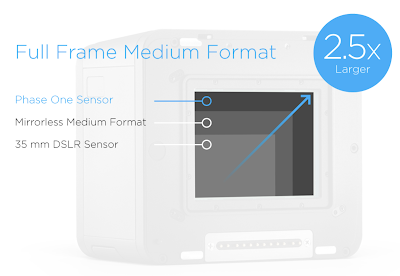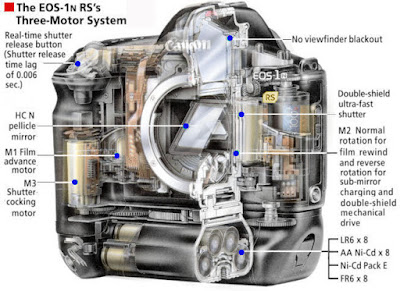Sony's FE Mount Fatal Mistake Drags On
My rather notorious piece critiquing the Sony 35mm format E mount mirrorless system written for Petapixel (from April 2016):
https://petapixel.com/2016/04/04/sonys-full-frame-pro-mirrorless-fatal-mistake/
A lot of new information has come to light since especially now that Canon, Nikon, and Panasonic have announced their own 35mm format mirrorless systems.
First and foremost there is this presentation by Canon at the time the R mount system was announced:
https://dc.watch.impress.co.jp/docs/news/1158578.html
The diagram I draw your attention to from Canon's media presentation on the new mirrorless R mount is this:
It turns out that based on Canon's optical research that the problem with an 35mm format mount with APS-C mount dimensions isn't just a short flange distance but when this is combined with a narrow mount diameter. Note the way light is forced to diffract awkwardly into the sensor corners. It is surmountable but it also means you need a large lens element at the front of the lens and extra corrective lens elements. The result will be a bigger, heavier, imbalanced, and more expensive lens. This explains why Sony FE mount lenses all trumpet out at the end to compensate for the ASP-C dimension mount diameter. We now have a solid optical engineering explanation for why Sony FE mount lenses are so bulky, overpriced, and imbalanced in a way that cancels out any gains made in producing a smaller camera body.
When you increase the mount diameter to a more appropriate size relative to the format, this limitation is overcome:
No longer is light forced to bend unnaturally into the sensor corners, but it further allows the optical engineer to place the biggest lens element closer to the sensor. The result is a less imblanced and front heavy lens with fewer elements. This allows Canon to make their lenses smaller for the R mount system. Here is the upcoming Canon R mount mirrorless 70-200mm f/2.8 lens compared to its DSLR equivalent:
It means that you are less likely to have an enormous lens with a trumpeting out of the front lens element producing a grossly imbalanced front-heavy body-lens combination.
I also point you to this statement from Canon as reported by Digcame Watch (my translation):
Early on Canon did investigate realising a 35mm format mount system based on the ASP-C sized EOS M mount series, however it fell short of desired objectives and satisfactory results were unable to be obtained. Additionally, when the mount was made unnecessarily large this merely resulted in making the system as a whole much larger. After constructing multiple test lenses, and after balancing the need for optimal optics with size considerations, a mount diameter of 54mm was decided upon.
キヤノンは当初、APS-Cミラーレス「EOS M」シリーズのEF-Mマウントで35mmフルサイズを実現することも検討したが、目指した性能が出ないなど、満足のいく結果が得られなかったという。そしてマウント径も無用に大きくしたところでシステムが大型化するため、複数のレンズを実際に設計して、光学的メリットとサイズのバランス、カメラの強度などを見ながら54mmに決めた。
Canon state quite clearly that they carefully explored the dodgy makeshift option of converting their APS-C mount M mount into a 35mm format mount, but after scrutinising its impact on the system, they rejected this option as unsatisfactory.
Some might claim that this represents Canon's biased view of Sony's FE mount. However, it is not just Canon who have rejected the option of a 35mm mount with APS-C dimensions. Not only Canon, but a whole host of other optical engineers throughout the industry have all rejected this approach. For example, Nikon have also chosen a 55mm mount diameter (although their flange distance is unusually short at 16mm, a progressive trend since the first generation mirrorless mounts). Leica have also chosen to make their L mount with a larger diameter at 51.6mm. Others in the L mount alliance including Panasonic, and Sigma have also opted to avoid an APS-C diameter mount. In short, optical engineers throughout the industry have considered the case for a 35mm mirrorless mount with APS-C dimenions and all have unanimously concluded that Sony's approach is a mistake. Sony's FE mount has been declared a fatal mistake by the virtually the entire optics industry.
Also of interest is Fuji's approach. The Fuji X mount has similar dimensions to the EOS-M mount and APS-C Sony E mount.
Fuji X mount: 17.7mm flange distance, 44mm diameter
Sony E mount: 18mm flange distance, 46.1mm diameter
Canon EOS-M mount: 18mm flange distance, 47mm diameter
In creating a 35mm mirrorless mount, Canon have made the R mount with a 20mm flange distance and 54mm diameter, whereas Nikon with their new Z mount 35mm mirrorless mount have chosen a 16mm flange distance and 55mm diameter. In creating a 4433 medium format mount, Fuji have proportionately increased both the flange distance and the mount diameter beyond the dimensions of the Nikon Z and Canon R mounts, with the medium format Fuji G mount having a 26.7mm flange distance and 65mm diameter. This is once again a rejection of a short flange distance mount hobbled by a diameter one format smaller than ideal.
It is certainly interesting to examine why Sony would have done what they did in retroconverting their APS-C E mount into the 35mm format FE mount. Part of it is that since the inception of the first generation mirrorless mounts, there has been a growing trend towards shorter flange distances. For example, the micro 4/3 mount, founded in 2008, has a 19.25mm flange distance. Between 2010-2012, Canon, Fuji, and Sony founded APS-C mounts with a flange distance of around 18mm. Now the 35mm format Nikon Z mount has an even shorter 16mm flange distance, continuing the trend towards ever shorter flange distances. It probably seemed to Sony that in starting a 35mm format mount, they wanted a shorter flange distance, and given that flange distance increases proportionately with increasing format size, by keeping the 18mm flange distance of the APS-C E mount for a 35mm mount, it would have the same effect as shortening the flange distance. The only problem is that Sony hobbled that mount with a crippling combination of a short flange distance and a mount diameter too small relative to the format. Many will point out that the Nikon F mount has a narrow mount diameter at 40mm, but with the Sony FE mount, the problem becomes not just the narrow mount diameter but the combination with a short flange distance.
Now many are going to point out that Sony are doing rather well with sales of their 35mm small format mirrorless cameras. However, that is because they drew first blood by launching a surprise Blitzkrieg in the form of a quick and dirty conversion of an APS-C mount into a makeshift 35mm format mount when they should ideally have done the hard work of starting a brand-new mount system from scratch. Sony have also done well in finding ways to overcome the limitation of the narrow mount diameter combined with short flange distance. However, you cannot rewrite the laws of physics, so that at some point their shortcuts will catch up with them, and Sony will eventually experience an optical Stalingrad. It looks like D-Day for the Sony FE mount is slowly approaching. All I can say is: I told you so.






Comments
Post a Comment